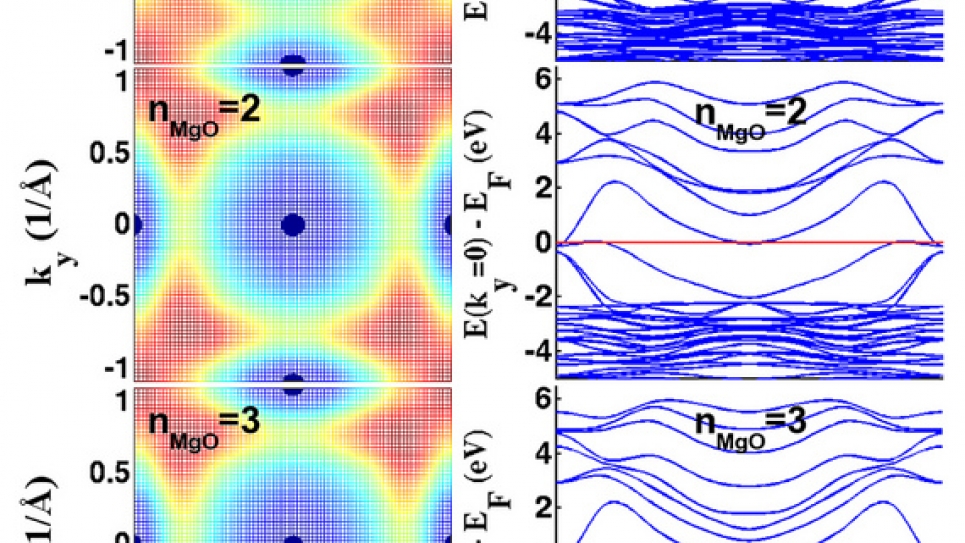
Electron Aceleration in Laser Wakefields with High NumericalResolution
Ultra-thin MgO films on Ag(001) surfaces constitute an example of how ultra-thin surface layers on metals can be used to control the emittance properties of photocathodes. In addition to substantially reducing the work function of the metal surface, the MgO layers also favorably influence the shape of the surface bands, resulting in the generation of high-brightness electron-beams. As the number of MgO surface layers varies from 0 to 3, the emitted electron beam becomes gradually brighter, reducing its transverse emittance to 0.06 mm-mrad.
Collaborators from Argonne, Northern Illinois University, and the Illinois Institute of Technology are developing photocathodes with ultra-low transverse emittance—a prerequisite for the development of x-ray free-electron lasers and energy-recovery linac x-ray sources. These devices can be employed to obtain sharper images of single, large molecules, such as vital proteins in physiological solutions. The research will contribute to the creation of instruments that will enable the study of phenomena that are not experimentally accessible today, including those in the biological and environmental research sector.
The research team is using the Quantum Espresso/PWSCF software package—a general quantum-mechanics code for atomic/molecular/solid-state physics and chemistry—to carry out the calculations of this work. The researchers are running their calculations on the Blue Gene/P at the Argonne Leadership Computing Facility and the Cray XT4 and XT5 at the National Energy Research Scientific Computing Center.
Researchers plan to conduct the screening of several other metal/oxide systems with the potential for low-transverse emittance photo-electrons by similar means. In addition, the team will study the effect of external electric field, surface roughness, etc. The best photocathode candidates will be tested experimentally.
Director’s Discretionary Allocation:
0.5 Million Hours